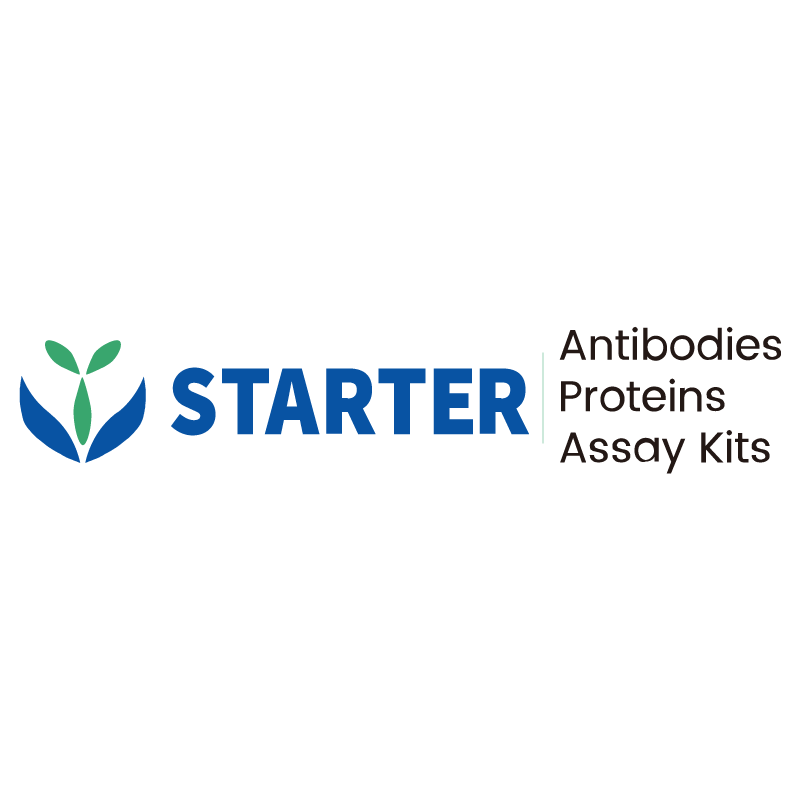WB result of Notch1 Recombinant Rabbit mAb
Primary antibody: Notch1 Recombinant Rabbit mAb at 1/1000 dilution
Lane 1: Molt-4 whole cell lysate 40 µg
Lane 2: HEK-293 whole cell lysate 40 µg
Secondary antibody: Goat Anti-rabbit IgG, (H+L), HRP conjugated at 1/10000 dilution
Predicted MW: 272 kDa
Observed MW: 120 kDa
Product Details
Product Details
Product Specification
| Host | Rabbit |
| Antigen | Notch1 |
| Synonyms | Neurogenic locus notch homolog protein 1, hN1, Translocation-associated notch protein TAN-1, TAN1 |
| Immunogen | Synthetic Peptide |
| Location | Cytoplasm, Nucleus |
| Accession | P46531 |
| Clone Number | S-1105-4 |
| Antibody Type | Recombinant mAb |
| Isotype | IgG |
| Application | WB, ICC, ICFCM, IP |
| Reactivity | Hu, Ms |
| Predicted Reactivity | Rt, Hm |
| Purification | Protein A |
| Concentration | 0.5 mg/ml |
| Conjugation | Unconjugated |
| Physical Appearance | Liquid |
| Storage Buffer | PBS, 40% Glycerol, 0.05% BSA, 0.03% Proclin 300 |
| Stability & Storage | 12 months from date of receipt / reconstitution, -20 °C as supplied |
Dilution
| application | dilution | species |
| WB | 1:1000 | |
| IP | 1:50 | |
| ICC | 1:500 | |
| ICFCM | 1:500 |
Background
Notch1 is a transmembrane receptor protein that plays a critical role in various cellular processes, including cell fate determination, differentiation, and proliferation. It is part of the Notch signaling pathway, which is highly conserved in mammals and is involved in multiple developmental processes and diseases, particularly in the immune system and cancer. In the context of mouse models, Notch1 is essential for the development of T cells and is frequently mutated in T-cell acute lymphoblastic leukemia (T-ALL). Activating mutations in Notch1 can lead to the development of T-ALL by causing ligand-independent activation of the receptor, resulting in constitutive signaling and uncontrolled cell proliferation. These mutations often occur in the heterodimerization (HD) domain of Notch1, which is responsible for preventing spontaneous activation in the absence of ligand. Notch1 signaling is also implicated in the pathogenesis of other cancers, such as breast cancer. In the case of BRCA1 deficiency, Notch1 activation can compensate for the loss of BRCA1 and promote the formation of triple-negative breast cancer (TNBC). This occurs through the activation of the epithelial-mesenchymal transition (EMT) signaling pathway, which is involved in the progression of TNBC.
Picture
Picture
Western Blot
WB result of Notch1 Recombinant Rabbit mAb
Primary antibody: Notch1 Recombinant Rabbit mAb at 1/1000 dilution
Lane 1: mouse brain lysate 40 µg
Secondary antibody: Goat Anti-rabbit IgG, (H+L), HRP conjugated at 1/10000 dilution
Predicted MW: 272 kDa
Observed MW: 120 kDa
FC
Flow cytometric analysis of 4% PFA fixed 90% methanol permeabilized HeLa (Human cervix adenocarcinoma epithelial cell) labelling Notch1 antibody at 1/500 dilution (0.1 μg) / (Red) compared with a Rabbit monoclonal IgG (Black) isotype control and an unlabelled control (cells without incubation with primary antibody and secondary antibody) (Blue). Goat Anti - Rabbit IgG Alexa Fluor® 488 was used as the secondary antibody.
IP
Notch1 Rabbit mAb at 1/50 dilution (1 µg) immunoprecipitating Notch1 in 0.4 mg HeLa whole cell lysate.
Western blot was performed on the immunoprecipitate using Notch1 Rabbit mAb at 1/1000 dilution.
Secondary antibody (HRP) for IP was used at 1/1000 dilution.
Lane 1: HeLa whole cell lysate 20 µg (Input)
Lane 2: Notch1 Rabbit mAb IP in HeLa whole cell lysate
Lane 3: Rabbit monoclonal IgG IP in HeLa whole cell lysate
Predicted MW: 272 kDa
Observed MW: 120 kDa
This blot was developed with high sensitivity substrate
Immunocytochemistry
ICC shows positive staining in HeLa cells. Anti- Notch1 antibody was used at 1/500 dilution (Green) and incubated overnight at 4°C. Goat polyclonal Antibody to Rabbit IgG - H&L (Alexa Fluor® 488) was used as secondary antibody at 1/1000 dilution. The cells were fixed with 4% PFA and permeabilized with 0.1% PBS-Triton X-100. Nuclei were counterstained with DAPI (Blue). Counterstain with tubulin (Red).


